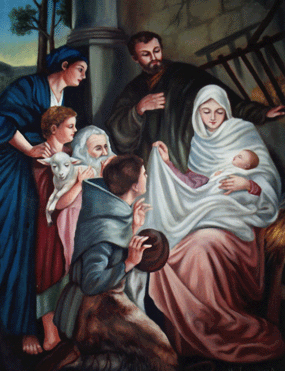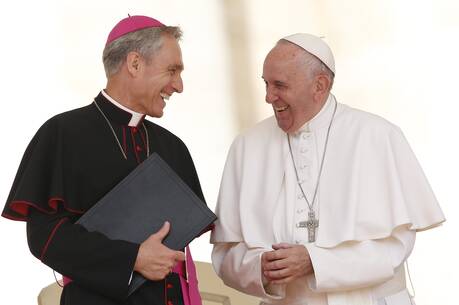Over the centuries those astronomers have been transformed in our shared cultural imagination into wealthy kings, crowned and bedecked in sumptuous robes, fitting attendants for a monarch destined to rule over all nations. Only in Matthews Gospel are the wise men first on the scene, however. Lukes account of the nativity tells us that the lucky first arrivals to the manger were local shepherds, alerted to the birth of Jesus by an angel of the Lord. Let us go over to Bethlehem and see this thing that has happened, they decide immediately, which the Lord has made known to us. In our modern nativity scenes and crèches, these shepherds usually receive short shrift in favor of the exotic scholars whose study of the heavens showed them the way to Bethlehem. It is a little harder, perhaps, to sell ourselves on the thought that shivering, dirty-faced teenagers in coarse tunics should be the first royal retinue for the King of Kings.
St. Francis of Assisi, who is credited in legend with building the first Christmas crèche, would likely have preferred the poor shepherds, simple peasants with no gifts for their Savior but their reverence and devotion. According to St. Bonaventures account of the legend, Francis original nativity scene in the Italian town of Grecio in 1223 was for him a living devotion. The ox and the ass were real creatures borrowed from neighbors, and on the night before Christmas almost eight centuries ago Francis himself stood watch over the manger, full of devotion and piety, bathed in tears and radiant with joy. Standing behind him in homage were the local peasants of Grecio. Many of them would have been shepherds, too, leaving behind their own flocks to join Francis in this new celebration of Christs birth.
The first visitors of Lukes account have another important link to the story of Jesus that goes beyond their proximity to the manger. They tended their flocks in the region of Bethlehem, the erstwhile home of Israels most beloved shepherd boy, David, who even when he was in the entourage of Saul still returned to tend his fathers sheep at Bethlehem. The flocks these shepherds cared for could well have been the descendants of the sheep David watched over so many generations earlier; some of the shepherds themselves might also have been descendants of the royal line. Not surprising, then, that Lukes angel of the Lord who appears to the shepherds makes the connection explicit: Do not be afraid. I bring you good news of great joy that will be for all the people. Today in the town of David a Savior has been born to you; he is Christ the Lord.
The child of Jesse was another unlikely king, born of humble roots and knowing the simple existence of a shepherd before he was chosen by God for a different life. I took you from the pasture and from following the flock, to be ruler over my people Israel, God tells David, before making him an astounding promise: I declare to you that the Lord will build a house for you: When your days are over and you go to be with your fathers, I will raise up your offspring to succeed you, one of your own sons, and I will establish his kingdom. He is the one who will build a house for me, and I will establish his throne forever. I will be his father, and he will be my son (1 Chr 17:10-14). From the line of one shepherd came the Good Shepherd, born homeless but to be the great builder of his Fathers house.
Both Gospel accounts of the first visitors to the Holy Family offer us a valuable reminder. Shepherds and Magi; ignorant and wise; manual laborers and bookish scholars; Jews and Gentiles; poor and rich; bringing offers of material gifts and showing outpourings of spontaneous devotion. The catalogue of differences between the two groups is vast indeed, but there is one striking similarity. When they realized the good news that a Savior had been born, neither suffered second thoughts. Both abandoned their tasksone group leaving the sheep under their guard, the other perhaps dropping their sheepskin parchmentsand struck out to place themselves in the presence of the Lord. They remain for us today a reminder that Christ came for all, not just for the learned and wise and not just for his own humble people, but to be that great joy for all the world.








